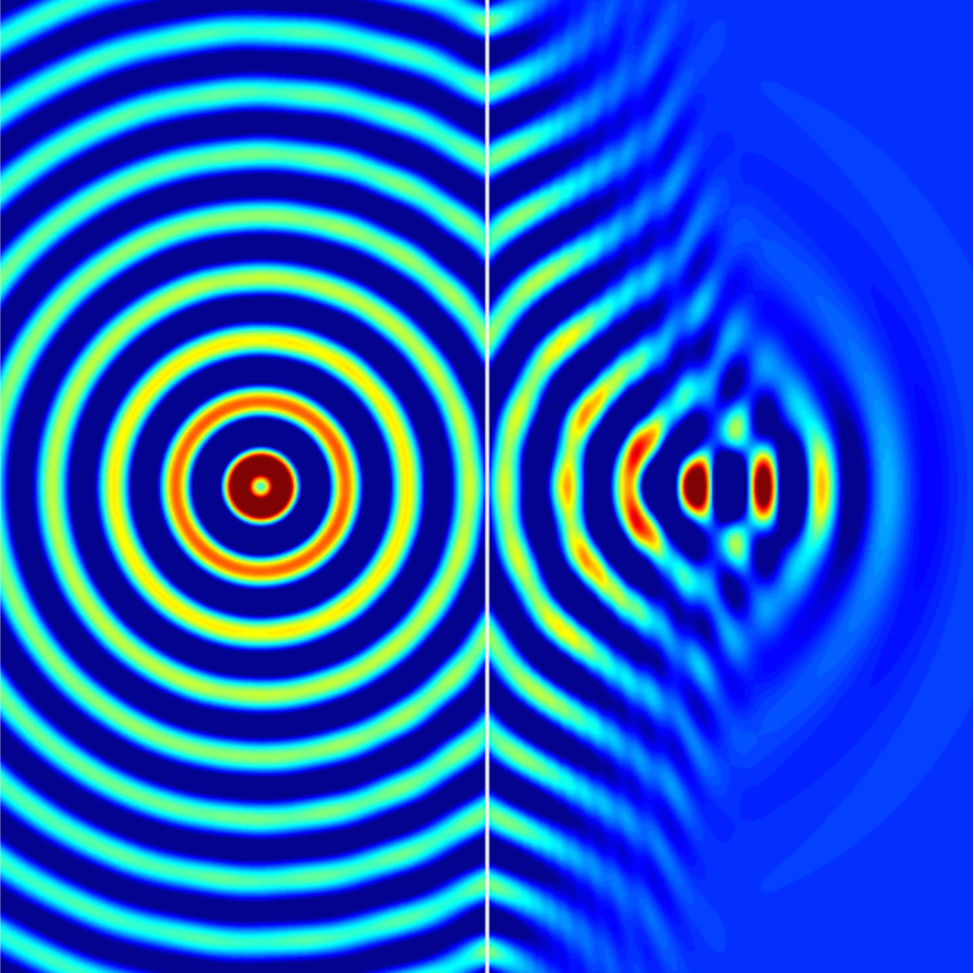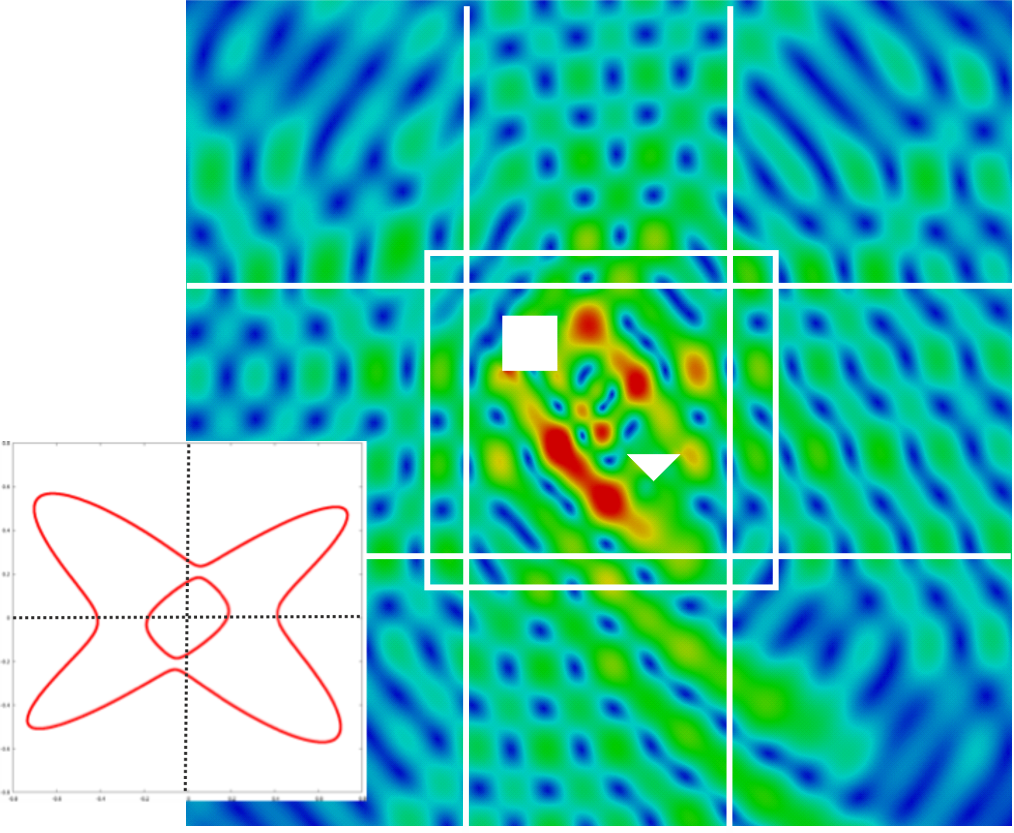Methods for unbounded domains, PML, DtN and HSM

The mathematical analysis and the numerical simulation of wave propagation problems, set in unbounded domains, is one of the main fields of expertise of POEMS. Our team is well-recognized for its contributions about absorbing boundary conditions for time-domain problems, Dirichlet-to-Neumann transparent boundary conditions for frequency-domain problems, and Perfectly-Matched Layers (PML) for both time-domain and frequency-domain problems. Let us also mention Boundary Elements Methods (BEM) which is the object of the Fast BEM.
These methods are well-mastered when the background is homogeneous, but difficulties arise when the background has some complexity which prevents from using classical approaches. For instance, it is well-known that PML may be unstable for time-domain elastodynamic waves in some anisotropic materials. More recently, it has also been noticed that standard PML cannot work in presence of negative-index dispersive materials. We address these questions in different ways. A one consists in designing case by case new PMLs which we prove to be stable despite the anisotropy and/or the dispersion of the material.

Besides we develop a new method that we call the Half-Space Matching (HSM) method, which works for problems wih complex (anisotropic, stratified, periodic...) backgrounds. While these two approaches (PML and HSM) were a priori complementary and distinct, new ideas have emerged recently from one to the other, and we have investigated the possibility of introducing the complex-scaling principle of PML in the HSM formulation, which opens new perspectives.
Note finally that we are also interested in the efficiency of the implementation of the methods, even for classical backgrounds, a question to which we contributed in collaboration with our industrial partners.



